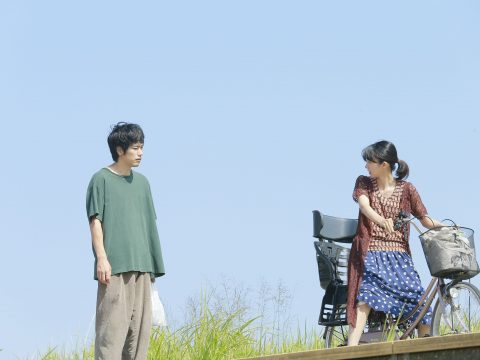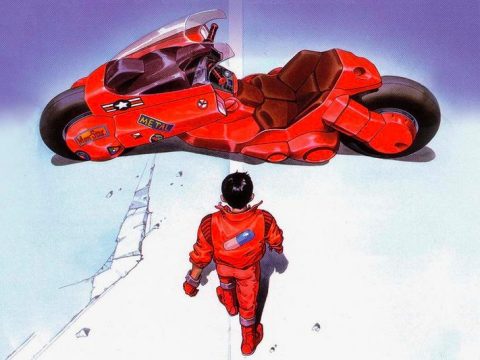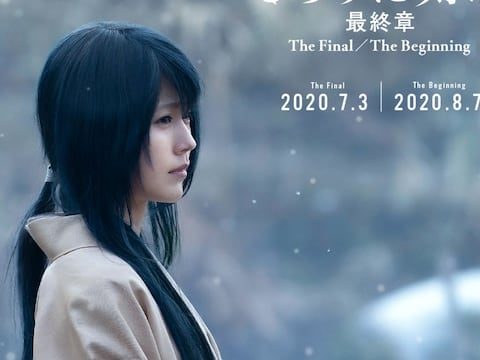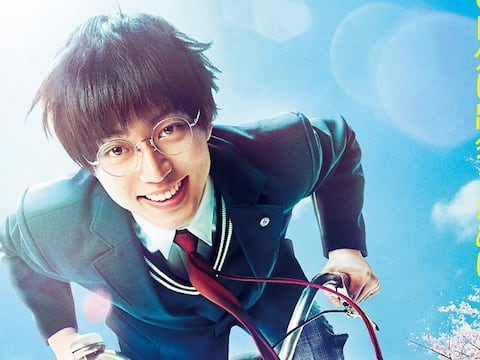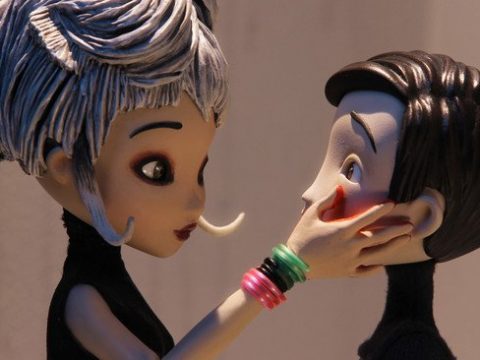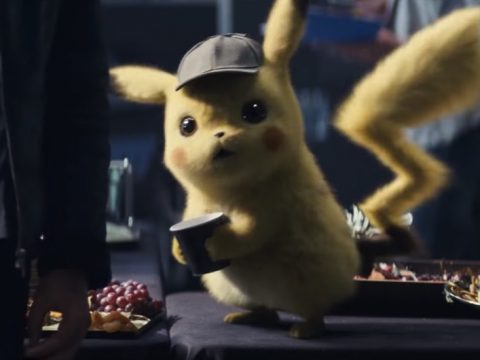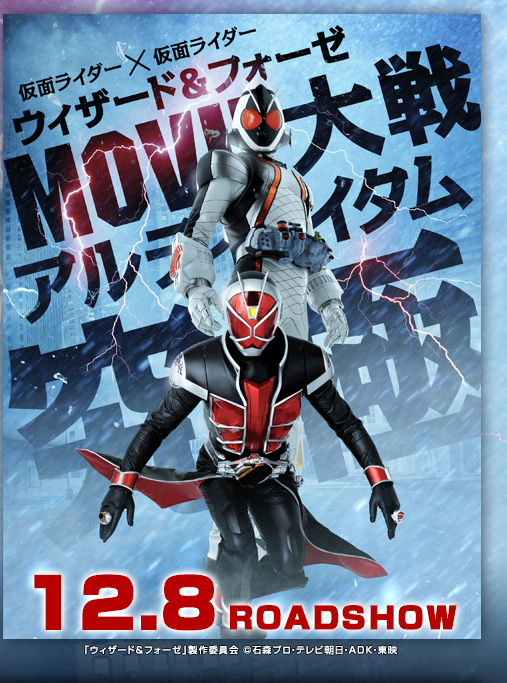
Dear reader, before we venture into today’s review, a movie with this many conjunctions and colons (which we will refer to as simply Ultimatum here) demands a more detailed introduction. Kamen Rider is one of the longest-running and beloved tokusatsu superhero franchises in Japanese history. Created by Cyborg 009 [link to 009 Re:Cyborg review] mastermind Shotaro Ishinomori, Kamen Rider has gone through many incarnations and reinterpretations over its four decades of existence, Gundam-style, ranging from the deadly serious Ryuki and Faiz to the comical Den-O. The more recent iterations, Fourze and Wizard, tend towards the latter side of the scale, featuring good guys who are more lovable than admirable and storylines written in broad strokes for the kiddies to follow along.
For those who will be put off by the reams of text and gushing praise to follow: make no mistake, Ultimatum stands well on its own as a solid two-hour injection of fun. Rest assured that the average Kamen Rider story is no more complicated than the average shonen anime. Lots of buzzwords get thrown about, but so long as you’re paying attention, it’s easy to get caught up in the constant action and have a good time with it –so long as guys in foam rubber beating the stuffing out of each other is cool by you.
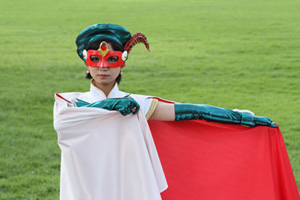 That said, some context for where your reviewer is coming from as an informed yet under-educated Rider fan: Fourze was an excellent and unlikely dramatic cocktail of wire-fu and John Hughes’ high school dramedies coming from action director Koichi Sakamoto and Gurren Lagann screenwriter Kazuki Nakashima. It was a solid thrill ride from beginning to end that came to a poignant finale filled with characters whom I rooted for week after week. On the other hand, I decided to let Ultimatum be my first exposure to Wizard. More on that later.
That said, some context for where your reviewer is coming from as an informed yet under-educated Rider fan: Fourze was an excellent and unlikely dramatic cocktail of wire-fu and John Hughes’ high school dramedies coming from action director Koichi Sakamoto and Gurren Lagann screenwriter Kazuki Nakashima. It was a solid thrill ride from beginning to end that came to a poignant finale filled with characters whom I rooted for week after week. On the other hand, I decided to let Ultimatum be my first exposure to Wizard. More on that later.
Now to the film proper. Ultimatum opens five years after the end of Fourze. The evil “Kamen Rider Club” formed in the series has graduated, but the torch is kept alit by the students at Amanogawa High. Series protagonist Gentaro Kisaragi has since become a teacher for the new generation of students. Childhood best friends Yuuki and Kengo have fulfilled their long-held dream of becoming an astronaut and being a researcher at Kyoto University, respectively. School idol Mui has become a model; gossip-monger JK is now a muck-raking journalist; Shun has inexplicably become a star American footballer hounded by reporters (in Japan? Even for tokusatsu, this is stretching it…). Meanwhile, goth-girl Tomoko is a successful novelist while her schoolgirl crush, the badboy Ryuusei, is out in South America doing deadly work as an Interpol agent fighting alongside the ever-bustier movie-exclusive character Inga Blink.
It’s then that the gang is suddenly reunited when a group of students with psychic powers decide to form their own club of evil-doers called “The Monster Union.”
It was these little catch-up moments that proved to be the highlight for this fan, given that the Fourze series always took extra-special care in how it treated its ensemble cast. While Gentaro was always indisputably the main character, the main theme of the show was “friendship at all odds,” and this was embodied in how the characters were each given their moment in the spotlight. While both the TV series and the previous Fourze movie provided a more-than-adequate finale to the series, this serves as an elegant epilogue.

After a small cliffhanger starts the much more surreal Wizard portion of the movie. The evil Akumaizers (a tribute to an older Ishinomori creation) are imprisoning children in a dream world, where people are all enraptured by a figure known as Poitrine. The execution harkens back to old Showa-era tokusatsu plots involving children in peril as Haruto, the alter ego of Kamen Rider Wizard, decides to get to the bottom of it.
What does the woman Yu Kamimura transforming into the magical ballerina heroine Poitrine have to do with this? What happens if the Akumaizers can unleash their insane death truck on the general populace? How many people will have to brush their hand over Wizard‘s beltline? What if the Wizard and Fourze have to team up on their motorcycles to ensure that said death truck doesn’t bring its insidious plot to fruition? Is this all as ridiculously awesome as it sounds?
 The answer to that last question is a resounding “Yes!”
The answer to that last question is a resounding “Yes!”
Indeed, director Koichi Sakamoto, in particular, always seem to show a genuine love for all the series’ characters, making sure that everyone gets their chance in the spotlight. Everyone, Rider and supporting cast alike, get a little moment to show off their acting and action chops and rarely, if ever, do they disappoint. A special highlight is in the Fourze portion, wherein Gentaro is in an extended parkour chase against a mutant psychic child. Not content to merely show the chase, Sakamoto includes copious point-of-view shots that send the audience flying through the air and bouncing off the wall alongside their hero.
Likewise, the fighting proper is shot with a healthy degree of style. Sakamoto’s fights in the TV series were explosive enough on their own, full of wire-fu and twirling camerawork. Yet, rather than Bourne Identity trilogy-style seizure-vision, the fisticuffs remain easy to follow and there is a decent sense of geography. While the orgy of CG at the climax is a little much and the Wizard section could have been served by some trimming of some redundant bits, the year has been capped off by a satisfying Rider movie.


